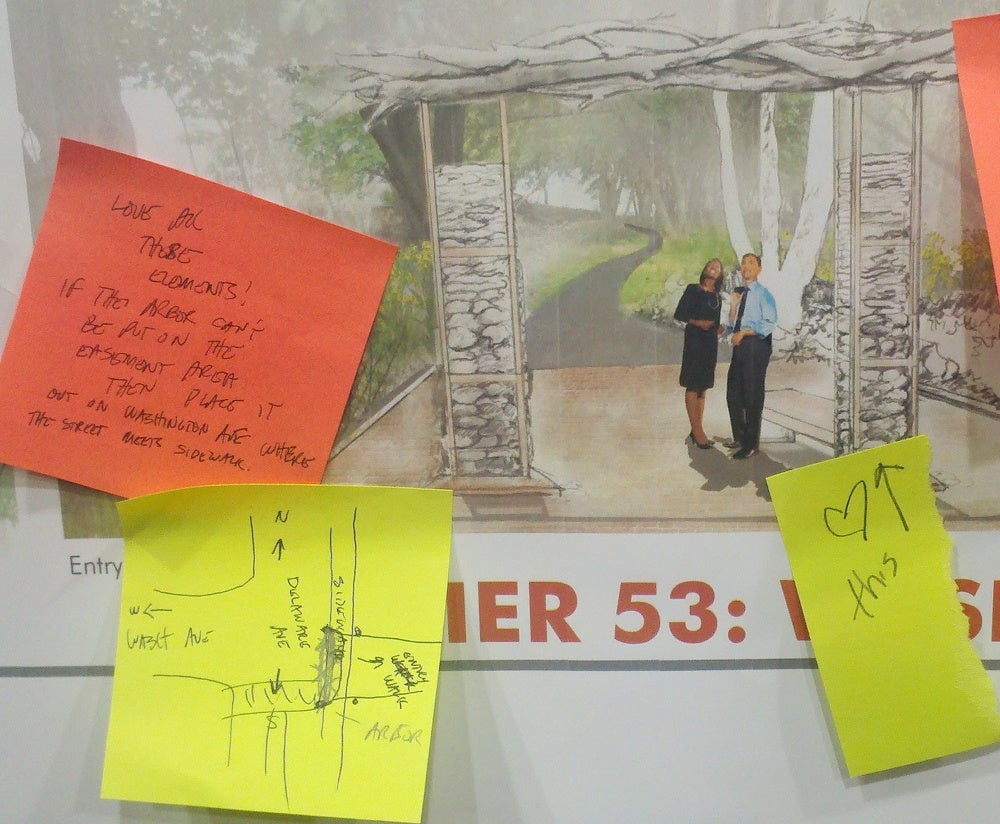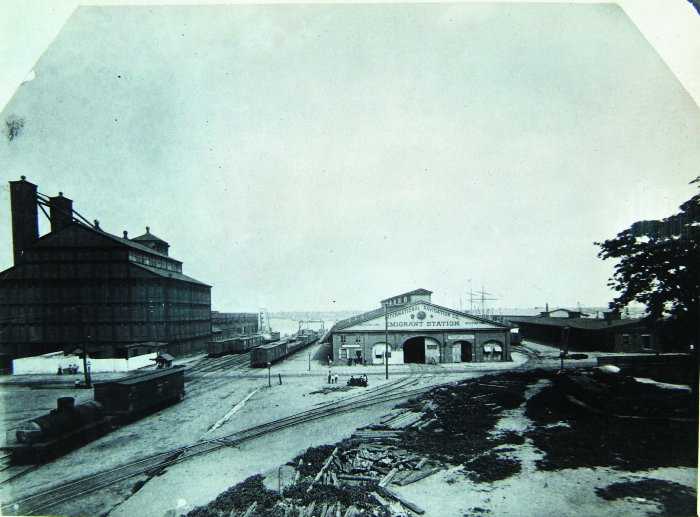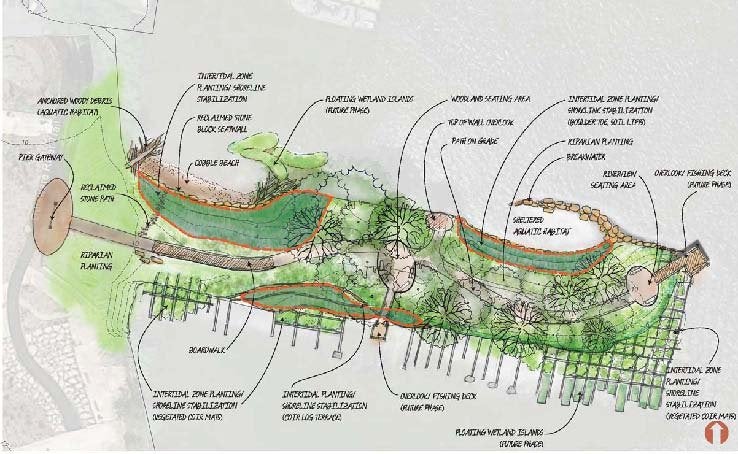The art of turning Pier 53 into a park
The work of turning what was once Philadelphia’s Ellis Island into the gateway of a Delaware River wetlands park has begun.
About 50 people attended the first public input session on the future of Pier 53 at Southwark House Thursday night. They learned – and helped fill in – information about the pier’s history and present condition, and provided guidance to Applied Ecological Services, which will design and build the new park.
Washington Avenue Green, which was one of the first projects the Delaware River Waterfront Corporation tackled under the city’s Central Delaware Master Plan, is on the uplands portion of Pier 53. The discussion Thursday considered what should be done with the pier itself.
Participants used sticky notes to post ideas on posters that showed various possibilities. They want to be able to touch the water. They want an arbor or other structure that helps bring attention to the park. They want a walking trail that leads to prime viewing spots, and nature tours, and a place to fish.
The Flora and Fauna of the Delaware River
Other suggestions included activities for kids, benches and picnic tables, and lighting that points downward so visitors can better see the stars.
Debi Richter, a member of the steering committee for Washington Avenue Green, especially loved the designer’s suggestions of creating a beach-like area and using materials found on the site to make an arbor that reflects the design of a tree house like structure that someone has already built on the pier.
A little beach where “kids can get down in the water and get dirty” is especially welcome, she said. But she’s very enthusiastic about the entire project. “I’m super-duper excited!” Richter said.
The session was the best opportunity for public input. While other DRWC projects, such as the Race Street Pier, had several input sessions, this pier doesn’t lend itself to as many different options, development-wise, said DRWC planner Lizzie Woods. One big reason: The DRWC hopes to restore and create wetlands that will serve as both wildlife habitat and storm water management tools. If these benefits can be demonstrated to federal and state officials, other developers who need to do wetlands mitigation for their own projects may be able to satisfy those requirements by paying for other portions of the wetlands park. The idea is for the park to eventually stretch from Pier 53 to Pier 70.
AES ecologist and project director Scott Quitel talked about current conditions on the pier. While DRWC isn’t encouraging anyone to go out on the pier yet – they need to get L&I approval – people have for years. Quitel said that users have actually made improvements to the space. In addition to the tree house/bower structure made of branches, someone has lined a path with pieces of brick, stone and other materials found on the pier. This work was also reflected in one of the potential designs that was shown.
“There seems to already be a respect shown by people who are going out there,” he said.
For a virtual tour of present conditions, click here.
Jayne Spector, a landscape architect with Langan Engineering, which is also working on the project, showed other materials found on site after the presentation. One especially interesting – and rather mysterious – finding: Pieces of Australian giant clam shells. The shell was used to make buttons, and button-shaped segments are missing, making the shells look rather like cookie dough with some round-cookie shapes already removed.
Before the pier was Philadelphia’s Ellis Island, it was the city’s first Navy Yard, she said, so it’s not clear how the shells wound up there, she said, adding that they might have been ships’ ballast material.
Part of the team’s early work has been assessing the flora and fauna of the pier. Quitel joked that the immigrants there now are largely of the non-native plant variety. Some of these plants are invasive and must be removed, he said. But that doesn’t mean others haven’t had some benefit. The pier has held together pretty well, and part of the credit goes to an Asian species of mulberry tree, whose deep roots have held soil in place.
Many species of plants and animals already live on or near the pier. Birds are especially prevalent since the river is part of an important fly-way. Interested in learning more about the plants and animals? See this list.
One native tree, the black walnut, is taking root on the pier. No mature walnuts are growing close-by, Quitel said. “The squirrels are even helping out” with the effort to transform the pier.
Construction is expected to be completed in 2014.
Reach the reporter at kgates@planphilly.com.
WHYY is your source for fact-based, in-depth journalism and information. As a nonprofit organization, we rely on financial support from readers like you. Please give today.






